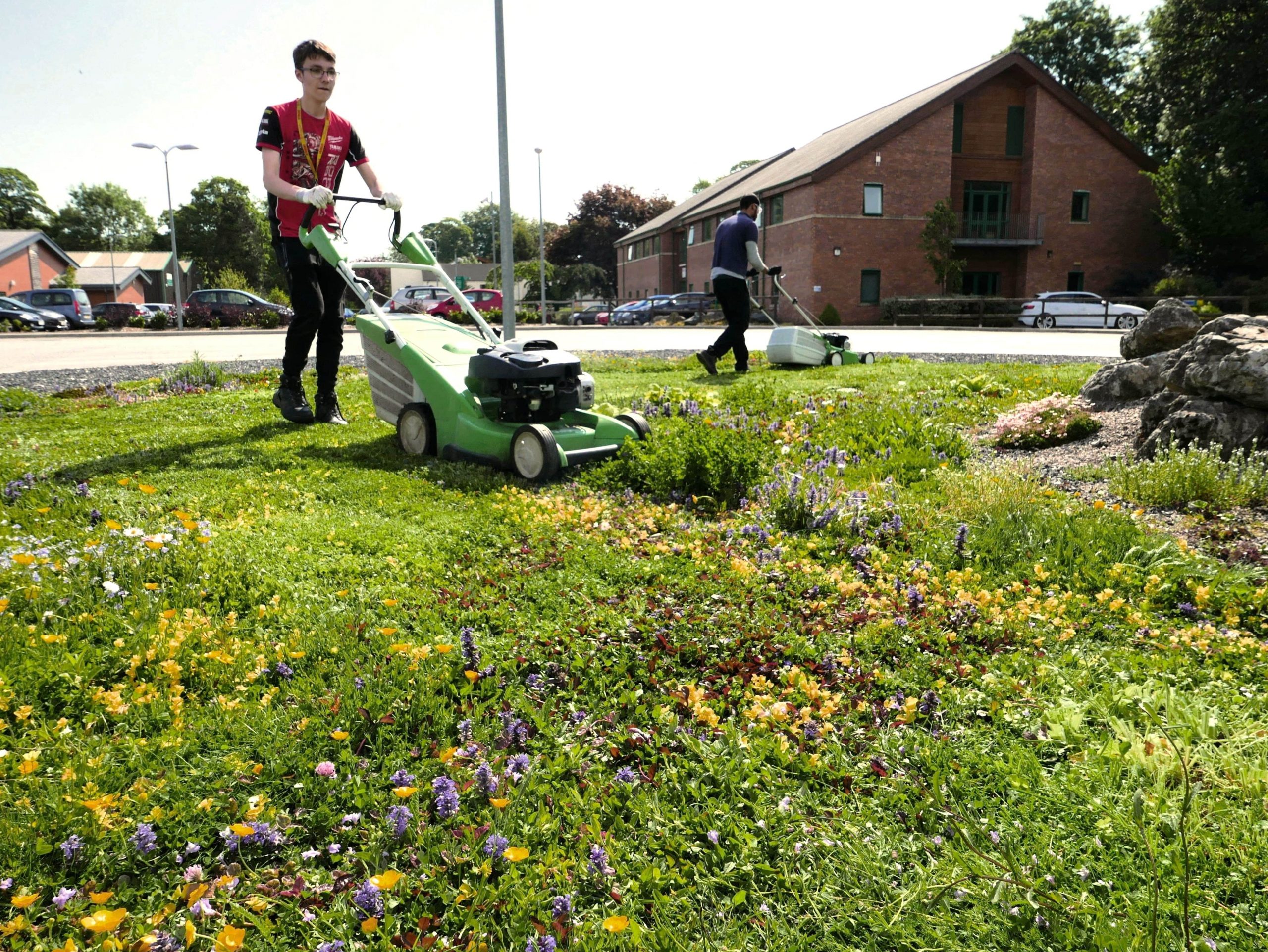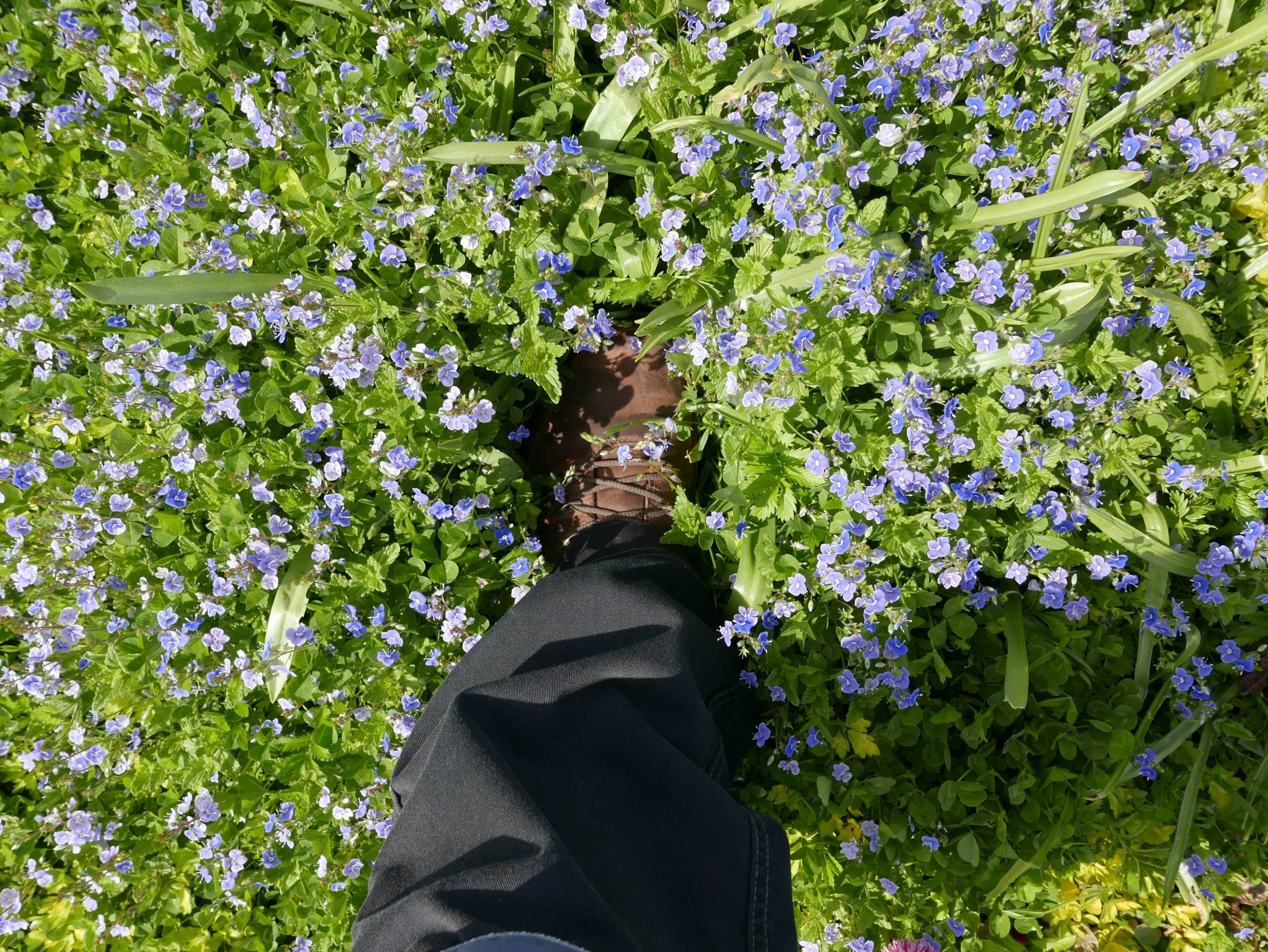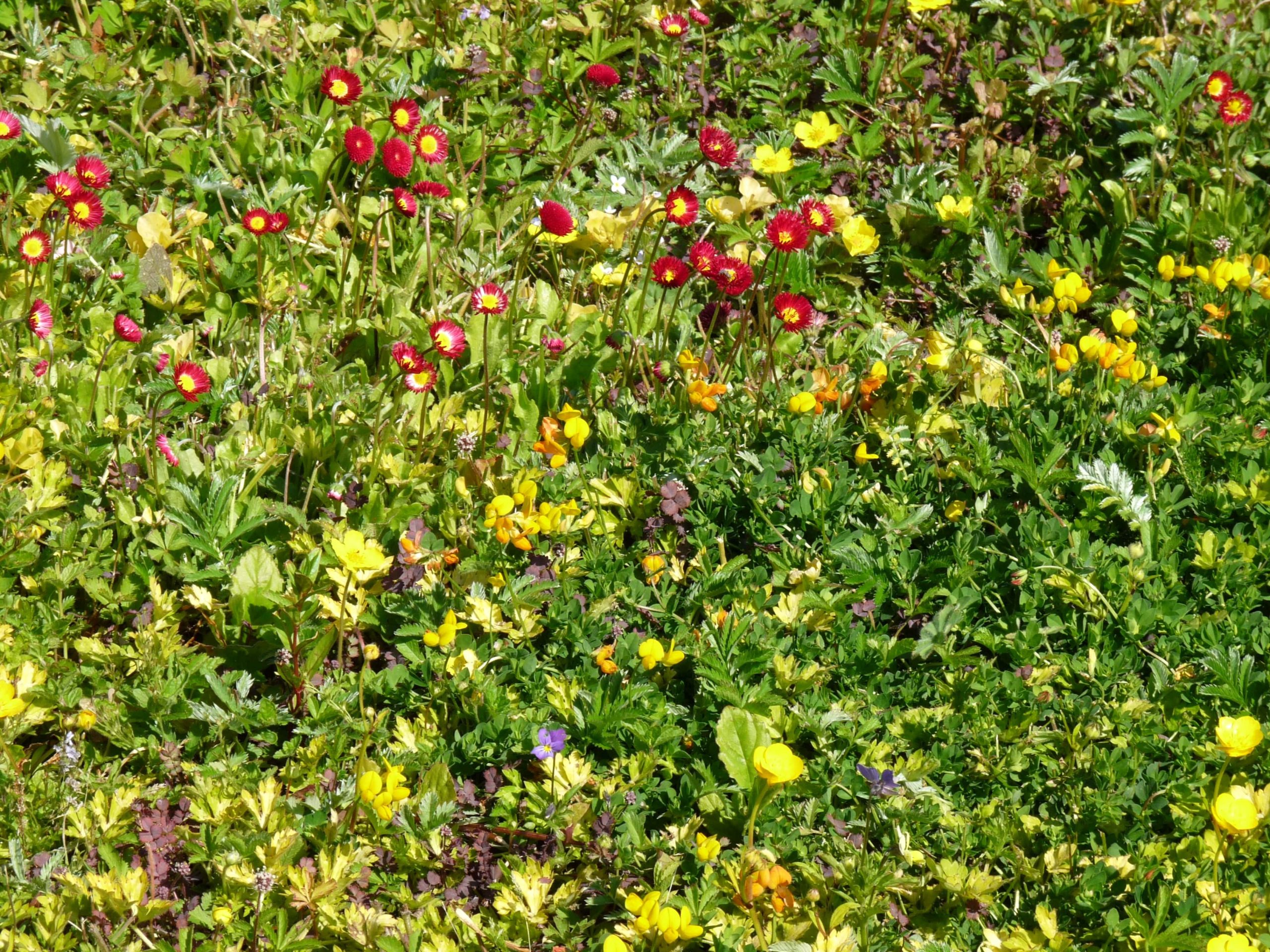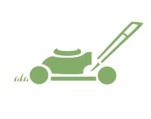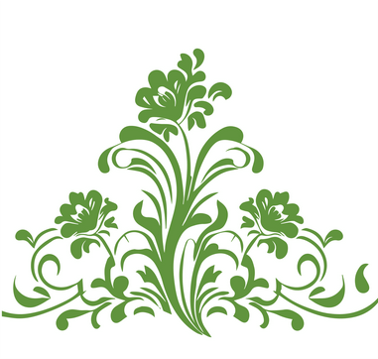Tapestry lawns need mowing, not often, but mowing is essential. The arisings should be collected and removed - they are a useful ingredient for making good garden compost.
Mowing is the ecosystem management tool that allows for relatively tall growing plants such as yarrow (Achillea millefolium) to grow with relatively low growing and creeping plants such as lawn lobelia (Lobelia pedunculata).
Mowing cuts the taller plants down to size and allows the smaller creeping plants to co-exist in the shared lawn space.
Only plants that can survive this environmental management and regenerate after being mowing are suitable for T-lawns.
T-lawn plants usually show plasticity of form in that they can adapt their shape and size after being mown, continue to grow, and are therefore considered mowing-tolerant.
Many ground cover/alpine plants are simply not suitable as they grow much too slowly for the lawn environment, and do not recover well from mowing, if at all.
A list of tested suitable lawn plants is available in my very reasonably priced book on the topic: Tapestry Lawns: Freed from Grass and Full of Flowers
Research and experience on when to mow and at what height has shown that mowing should be undertaken when the lawn foliage has reached around 8-9cm (3-3.5") in height, although this is not absolute and can be influenced by the plants used in the lawn and the environmental conditions.
If you place your boot on the lawn and the foliage is overtopping it at the sides, then it is probably time to mow - whatever the floral condition of the lawn.
However tempting it is to just let the lawn keep blooming, the lawn must be mown. Unmown it will stop being a lawn very quickly, lose some of the creeping plants originally included and head toward becoming some form of species-reduced meadow.
I have heard taking a mower to a lawn with hundreds if not thousands of flowers covering it called "garden heresy", but the diversity of plants and flowers is only there because the lawn is mown.
Without mowing, the lawn will degrade and lose its species richness as taller plants out-compete the low creeping ones.
After trialling cut heights and frequencies over several years, it was determined that the ideal height at which to mow a T-lawn is ≈ 4cm (1.5").
The frequency of mowing will depend on the Great British weather, but usually starts sometime in May, around the same time as the Chelsea chop.
If it is wet and warm, then the lawn will grow faster than if it is dry and cool. Experience has indicated that a lawn mown just four times in one dry and cool year may need mowing eight times in a warm, wet year.
The mowing conditions are also influenced by the plants that are most successful in any one year. In warm wet years buttercups may flourish, in drier cooler years it may be the daisies. Each year will be different, just as it is in the garden as a whole.
If a species should become overly dominant or fail, simply reduce its presence if dominant or replace it if failed.
This is a garden lawn, feel entirely free to undertake lawn gardening as necessary. Completely change it, tweak it, respond to it, or leave it as you see fit, in just the same way gardens in general and their plants are tweaked and added or removed.
It is always a good idea to remove grasses when you see them if you wish to keep your lawn grass-free.
There is absolutely no reason a T-lawn should be kept exactly as it was first planted. It is quite likely that some plants will not like the spot first given them. Clonal species will probably move of their own accord as they spread and mingle, but others might benefit from being moved or replaced entirely by a more suitable species. It is simple commonplace gardening, just in the lawn.
Be daring, be ahead of the trend, become an avant-garde lawn gardener, and a lawn heretic - like me!

